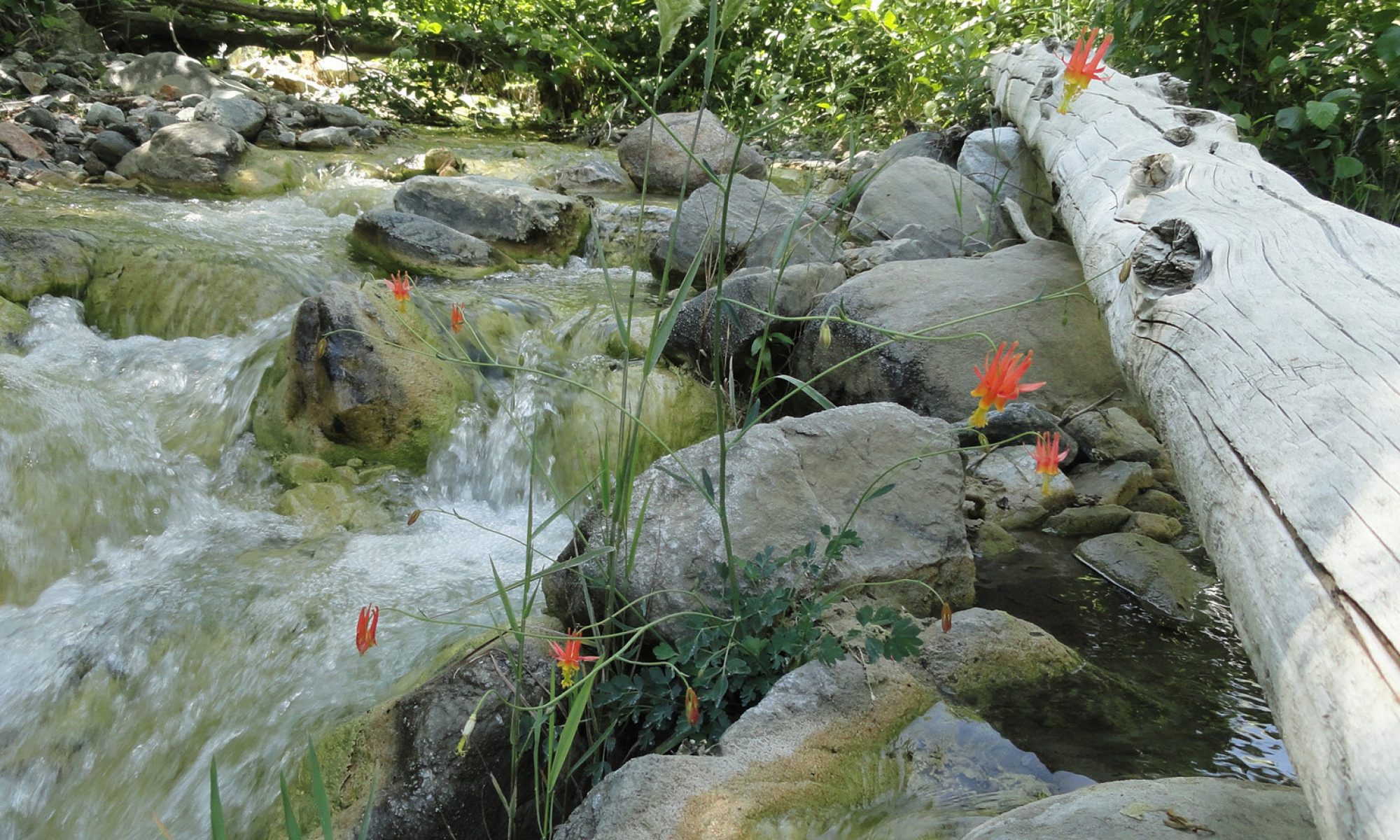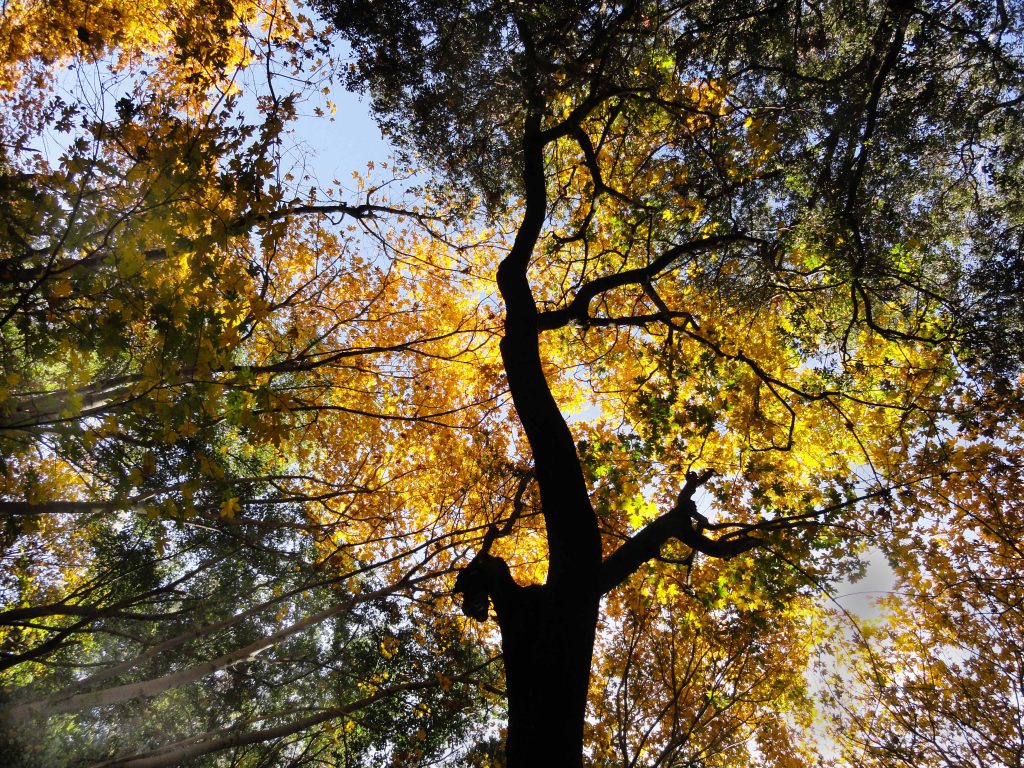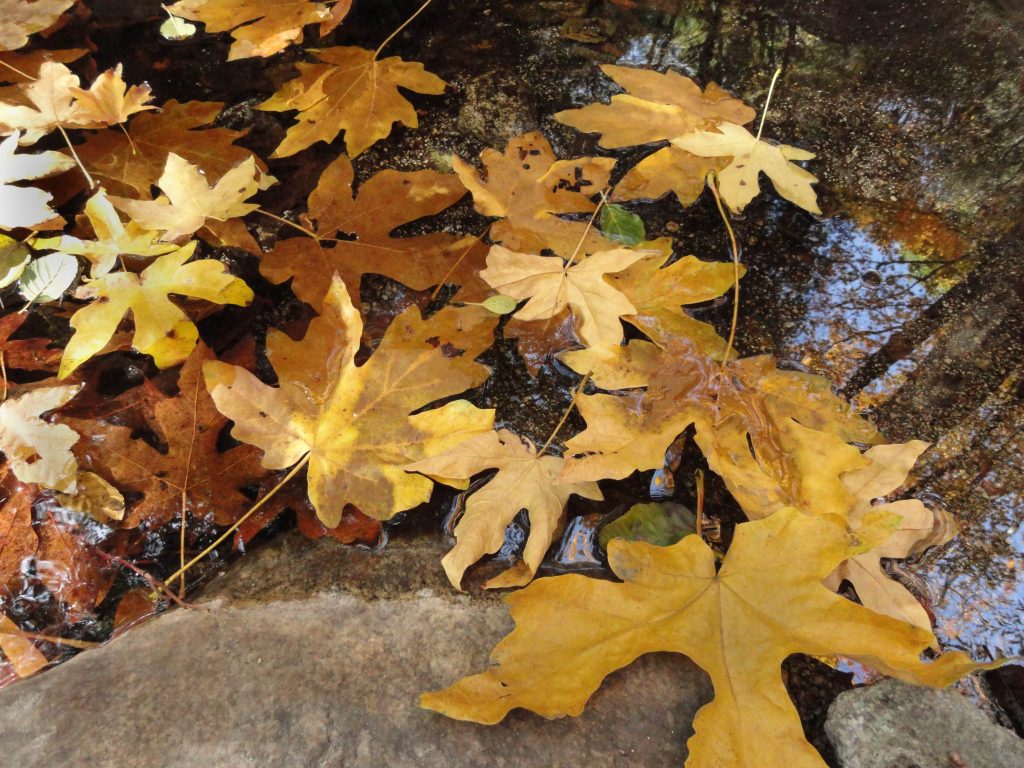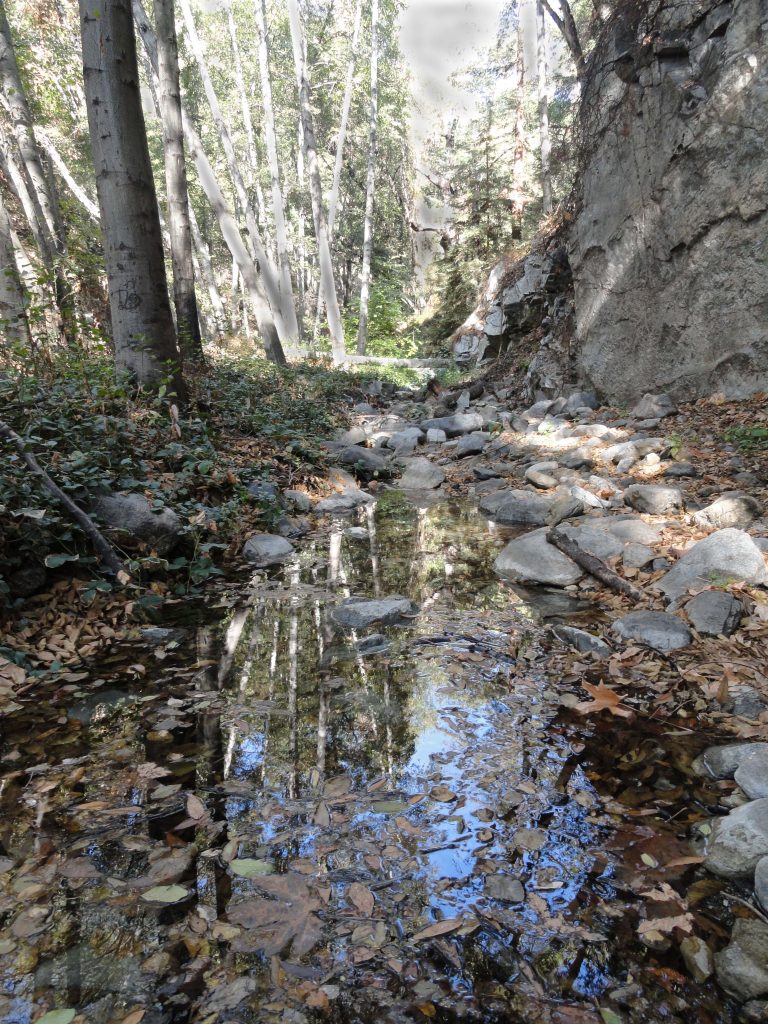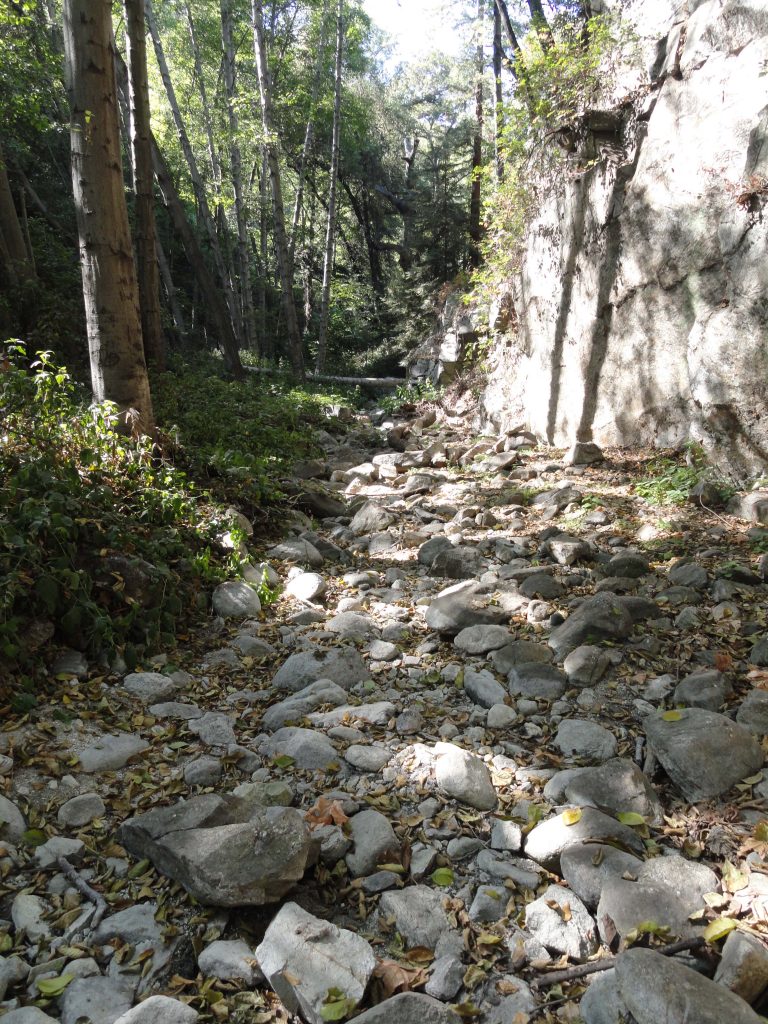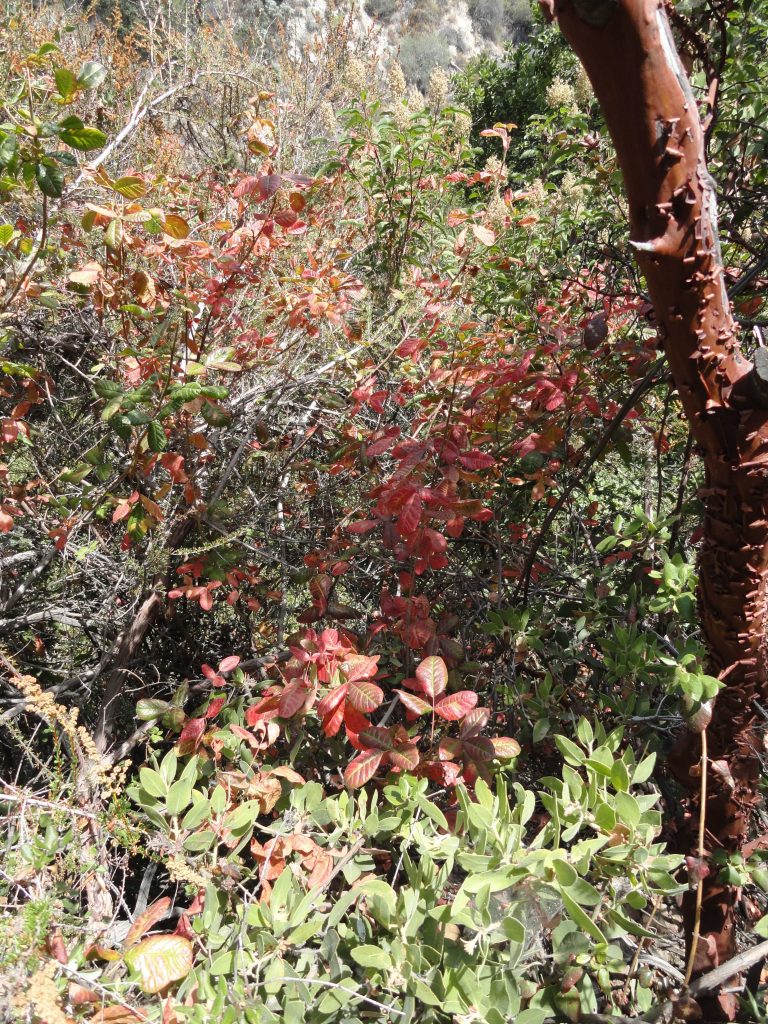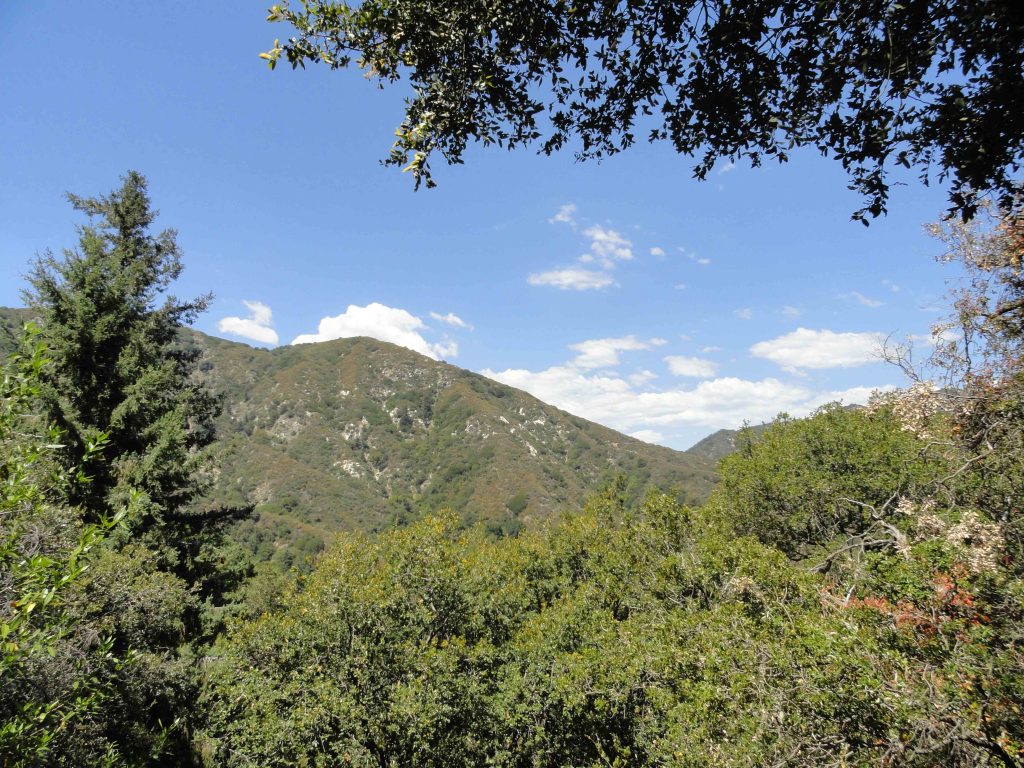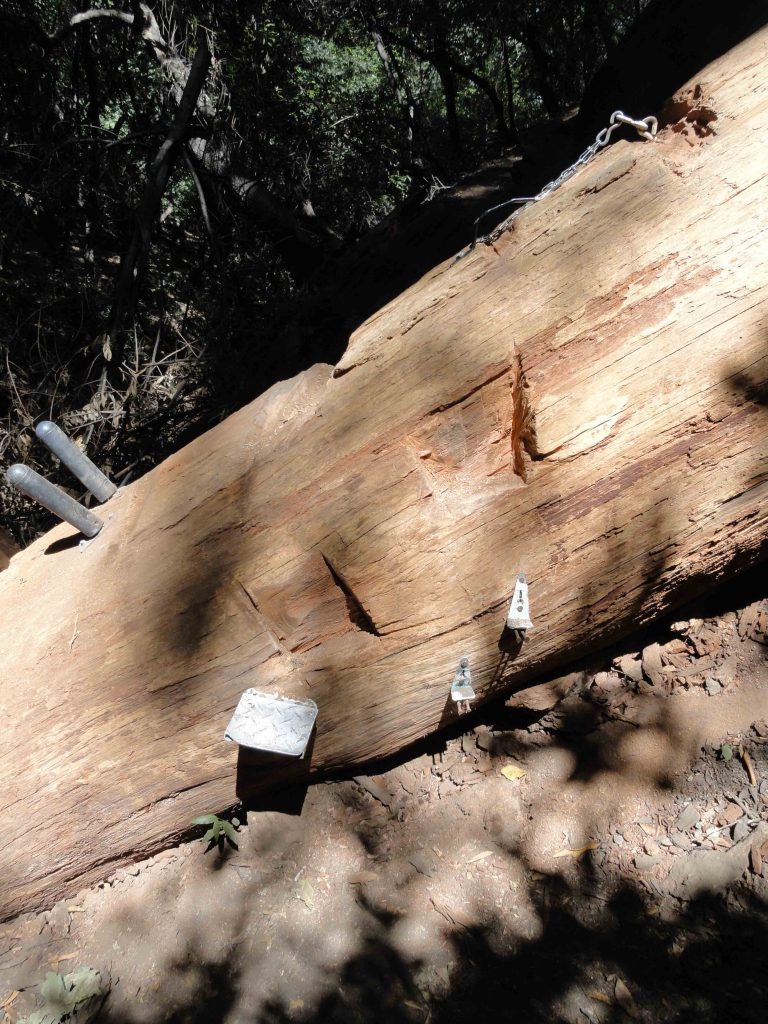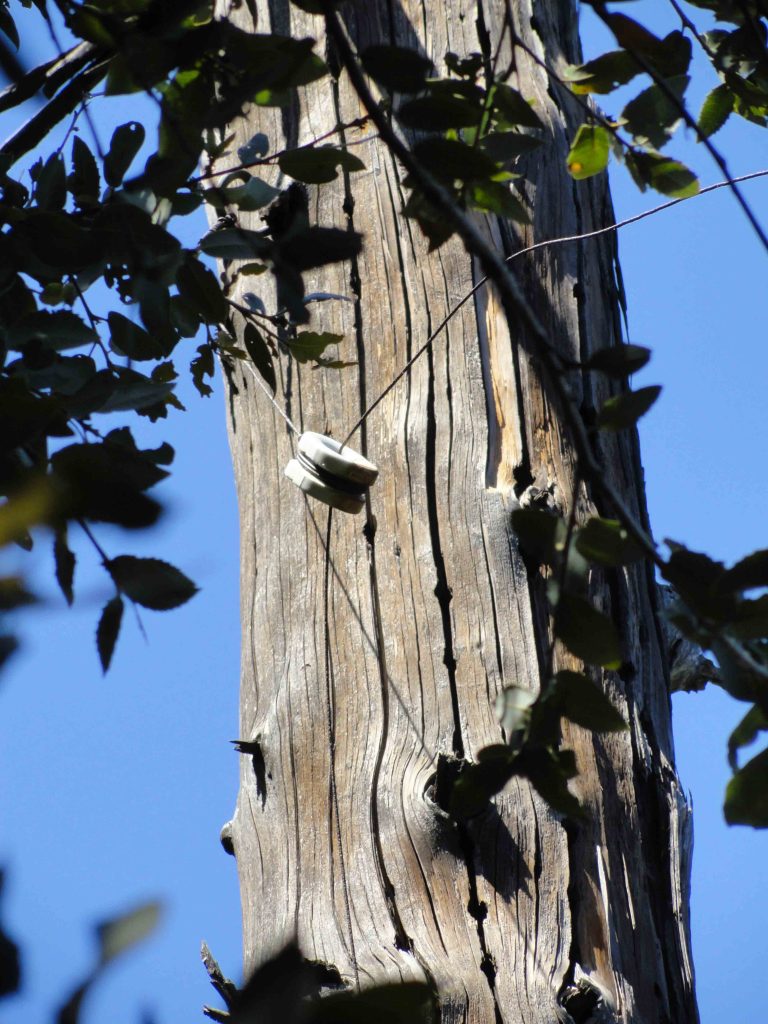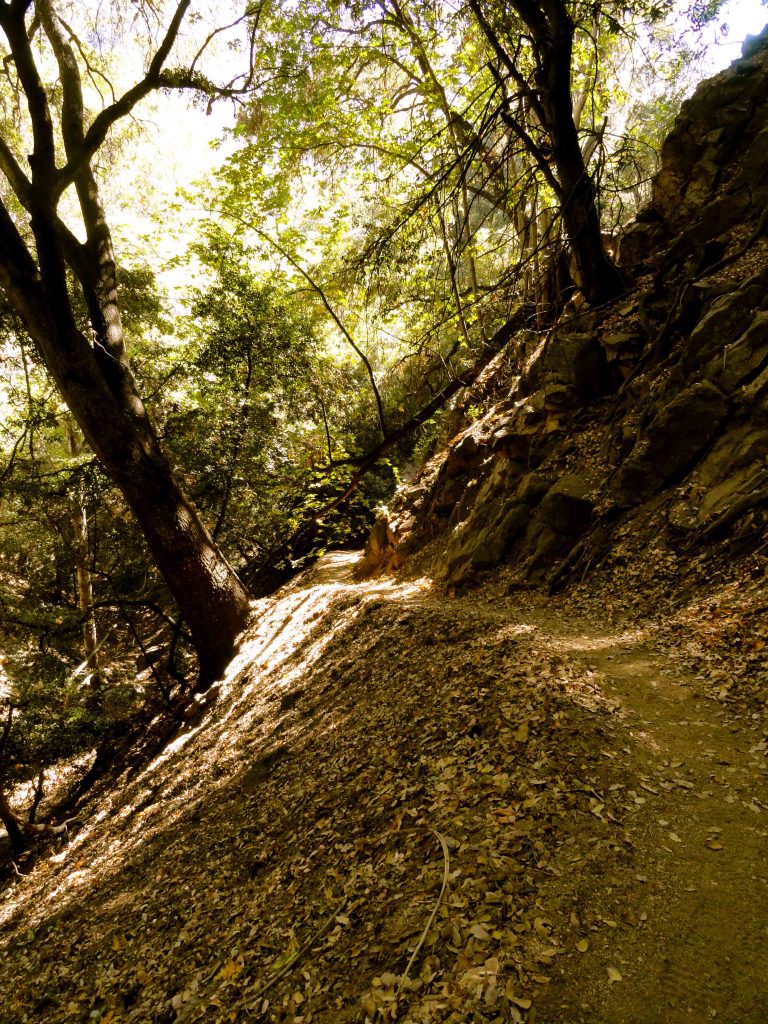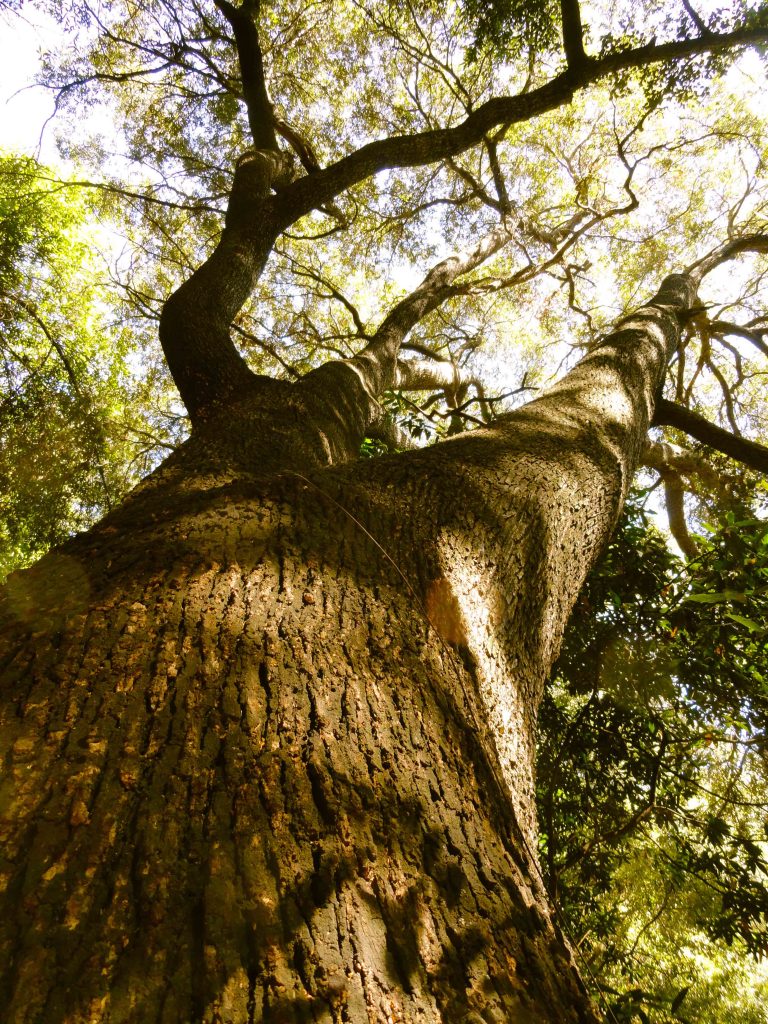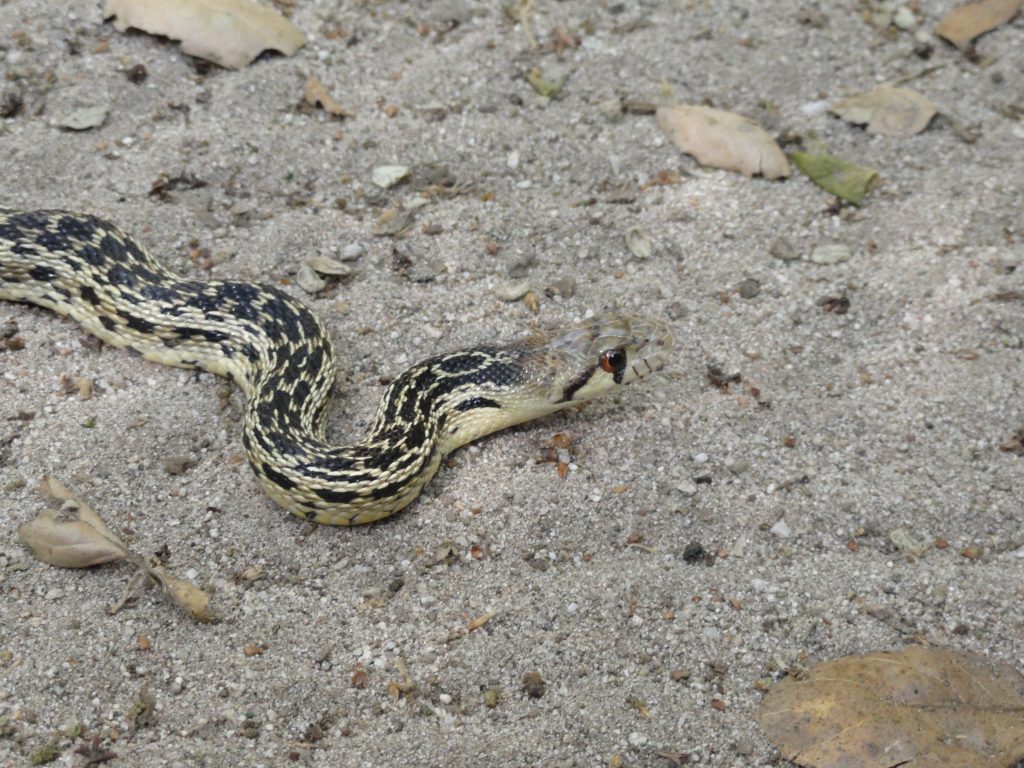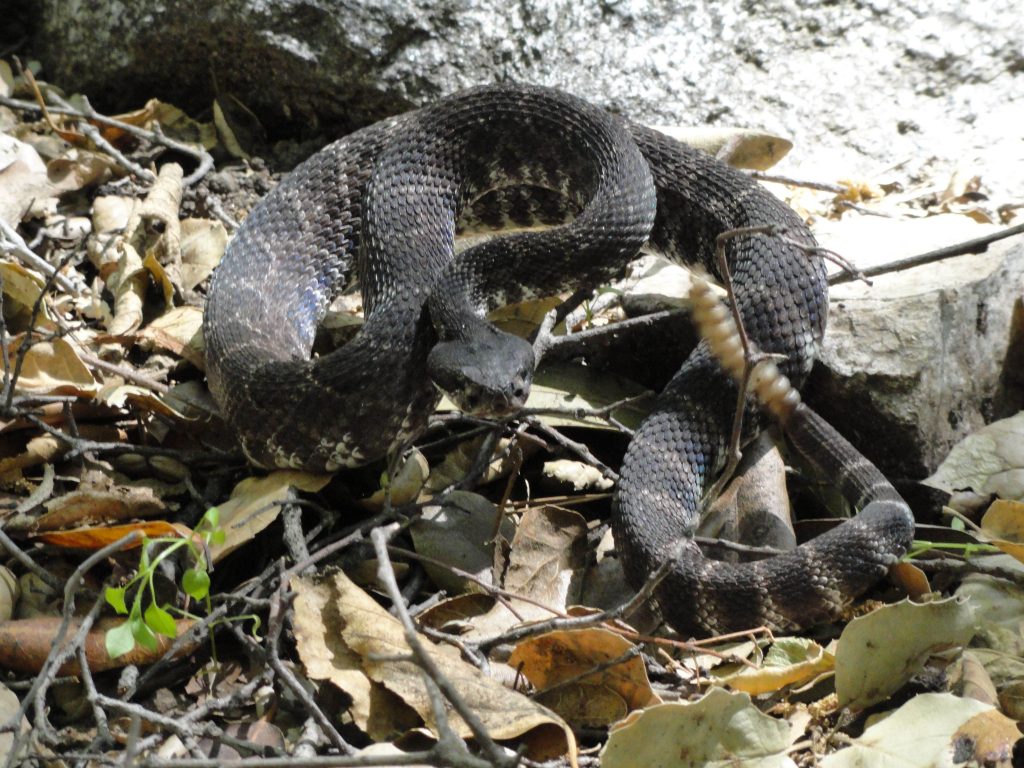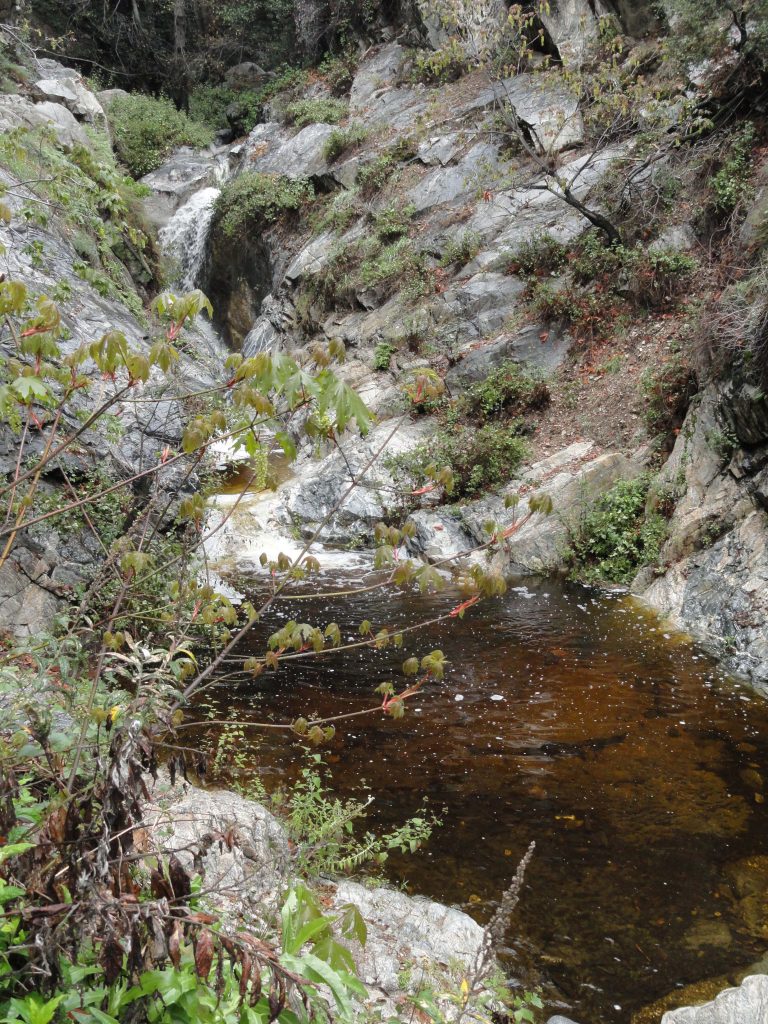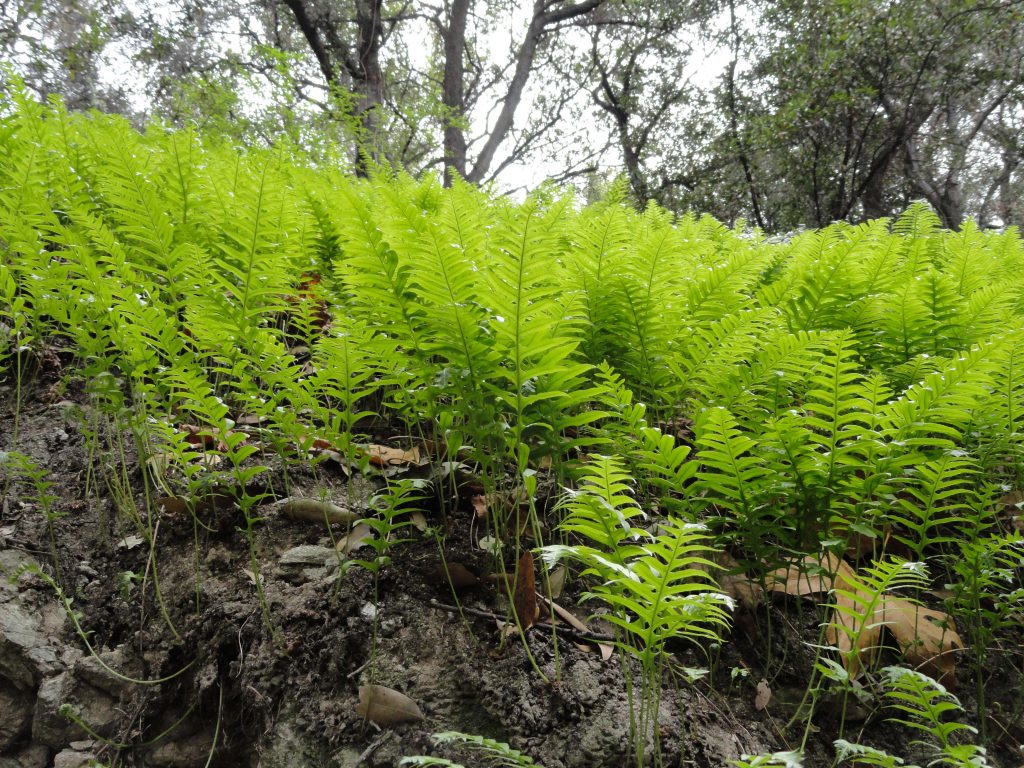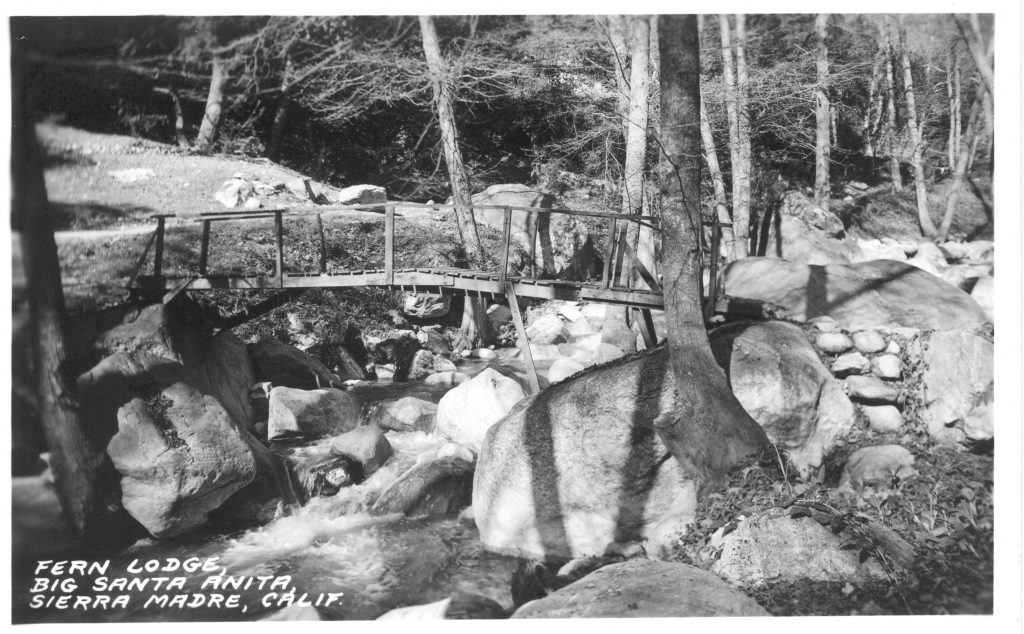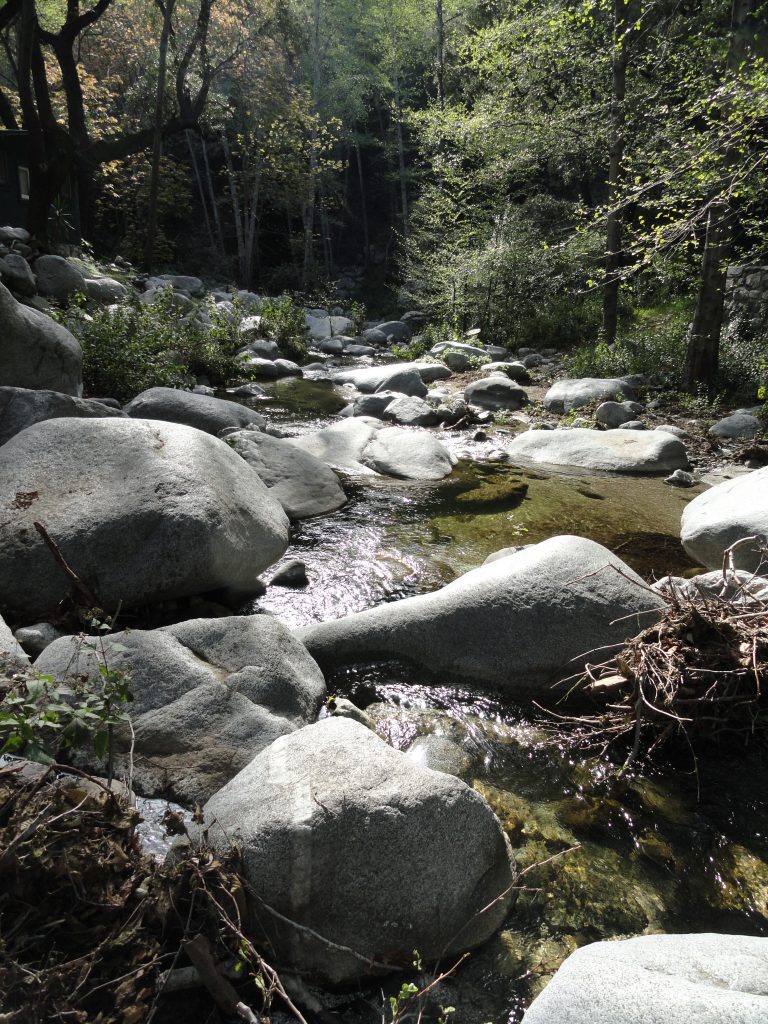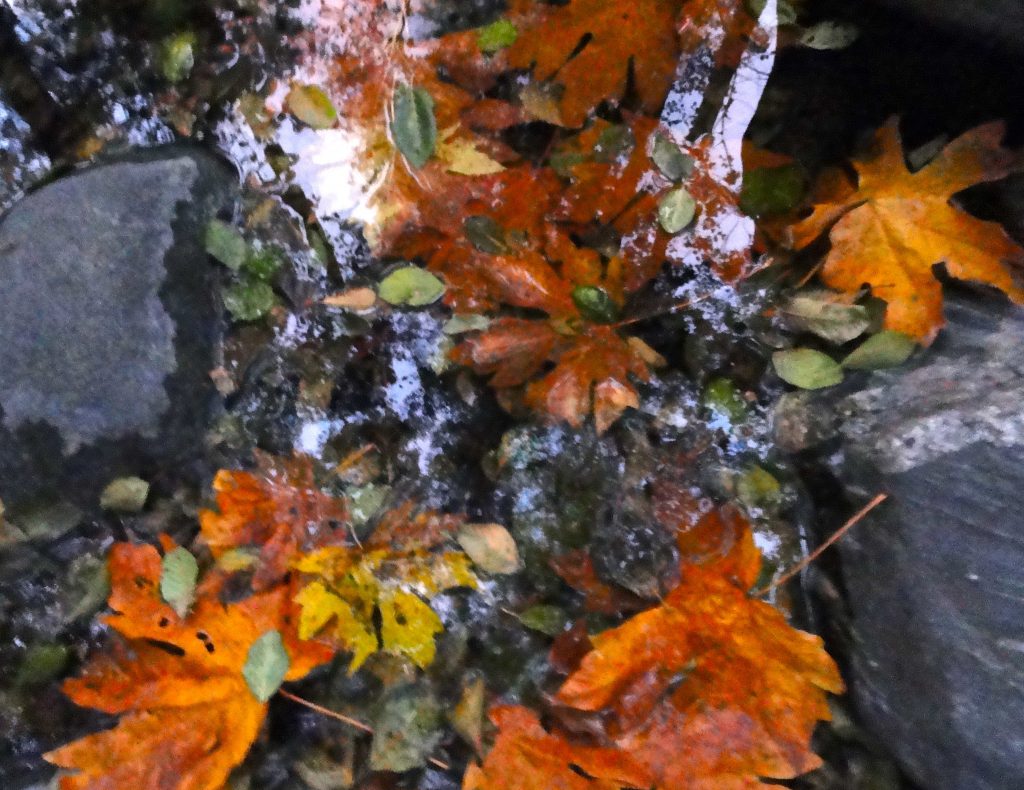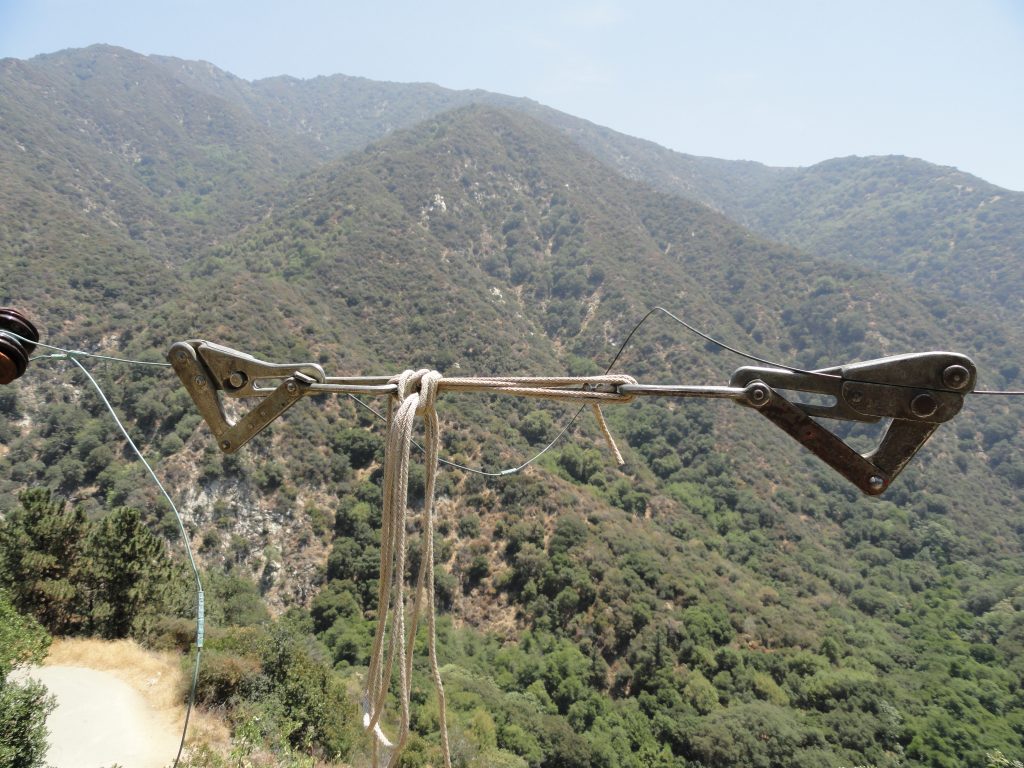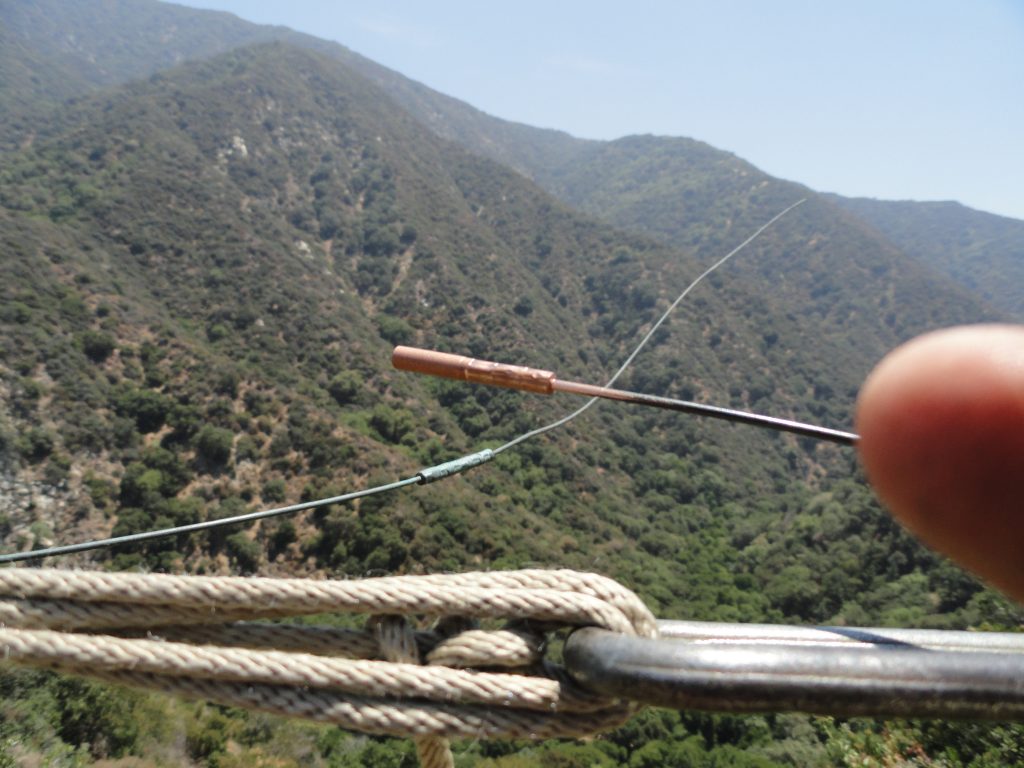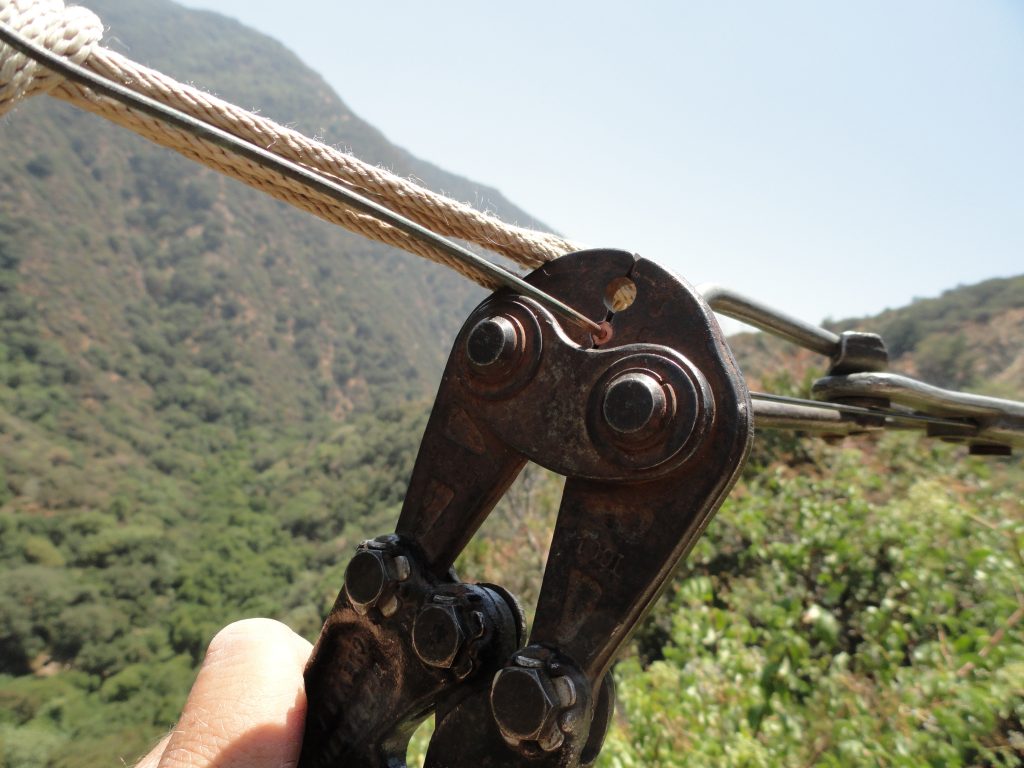Big Leaf Canyon Maple leaves blaze in this vertical view of tree canopy. Winter Creek, between Fern Lodge and Hoegees Campground.
We received nearly an inch of much-needed rain on Halloween in our parched Big Santa Anita Canyon and Winter Creek. Yet, it didn’t really do much to increase the Big Santa Anita Canyon creek flow. To date, it’s been rainless for all of November, yet the autumn beauty is as good as about any year. Poison oak has been reddening for months and the Big Leaf Canyon maples have been gradually changing color. Yellows and golds abound in many of the tree canopies as well as fallen leaves on boulders, slopes and in the stream beds. The scent of leaves and damp soils is really noticeable right now, especially right along the streams. Crickets chirp throughout the day in many of the shadowy pockets to be found along the hiking trails. With the sun dropping so far to the south on these shortening days, the light is angled to the point that perpetual shade can be found along the north and east facing slopes of the canyons. The days are so short now, many of us find ourselves hiking the last couple of miles back out to the trailhead in the dark.
Another trait one might notice is the slight increase in the Big Santa Anita Canyon creek flow. Despite no real precipitation to speak of since the end of October, there’s this phenomenon that takes place throughout much of the southern and central California canyons. With the leaves falling from so many of the white alders and maples that grow along the canyon stream courses, these trees have nearly stopped transpiring moisture into the atmosphere. They’re dormancy has begun and water that would have been drawn up through the roots is continuing to stay in the streams. This really gives you an idea
Big Santa Anita Canyon’s stream has come up, albeit slightly. Photo taken between Roberts’ Camp and Fern Lodge.
of how much water it takes to sustain these deciduous trees. So, even with out the rain, there’s now just a bit more stream sound than a couple of weeks ago. What a great time to get out for a hike and take in the beauty and peace of our San Gabriel mountains.
